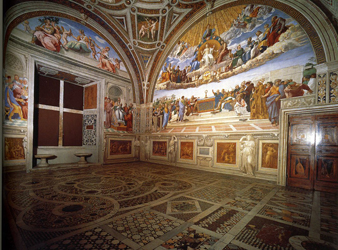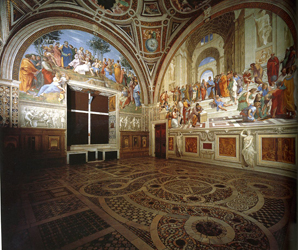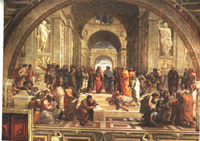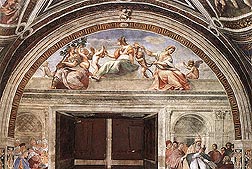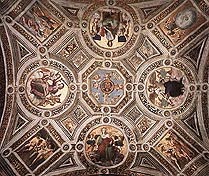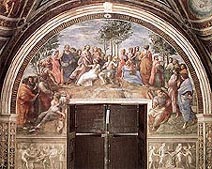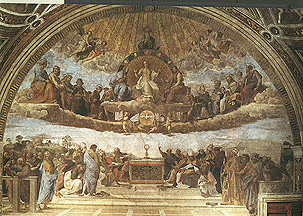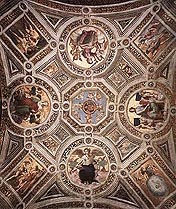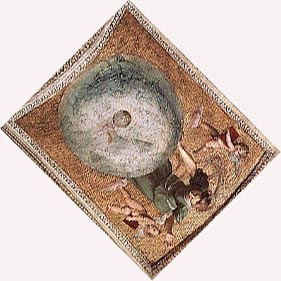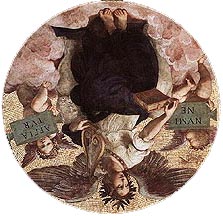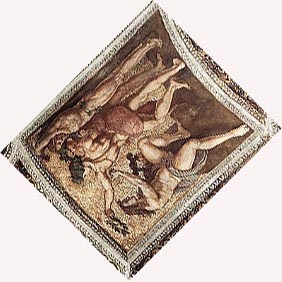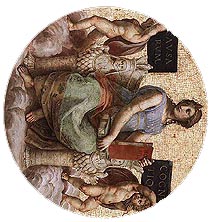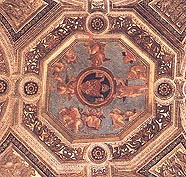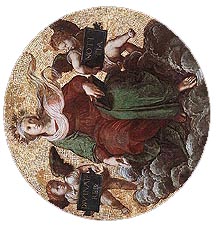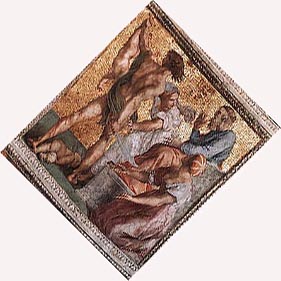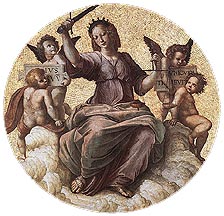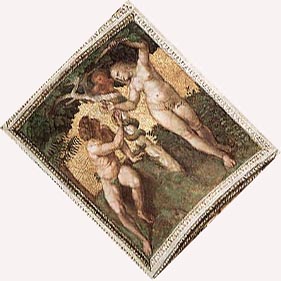Art Home | ARTH Courses | ARTH 213 Assignments
Stanza della Segnatura
|
Three Virtues above: Fortitude, Prudence, and Temperance. Below left: Justinian receiving Civil Law; Below right: Pope Gregory IX receiving the Decretals (Canon Law). |
||
Ceiling of the Stanza della Segnatura
The structure of the ceiling of the Stanza della Segnatura can be compared to a tradition of macrocosm diagrams that extends back to Antiquity through the Middle Ages into the Renaissance. The example below typifies this type diagram:
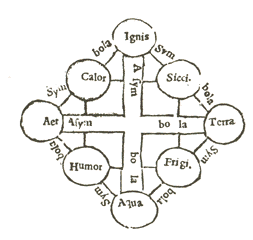
Here we see the Four Elements placed at the four corners beginning at the top with Fire (Ignis) and moving clockwise around with Earth (Terra), Water (Aqua), Air (Aer). Linking the Four Elements are the so-called Four Qualities: Hot (Calor), Dryness (Sicci), Cold (Frigi), Wetness (Humor). Each of the Four Elements is formed of the combination of the adjacent Qualities. Note how this establishes the opposition of the Elements so that Water is the combination of cold and wetness is the opposite of Fire which is the combination of hot and dryness. The following table charts out some of the correspondences articulated by this plan of the macrocosm:
|
Elements
|
Temperaments
|
Ages
of Life
|
Planets
|
Seasons
|
Winds
|
Times
of Day
|
Colors
|
Qualities
|
|
Air
|
Sanguine
|
Childhood
|
Jupiter
|
Spring
|
Zephyr
|
Morning
|
Red
|
Hot
/ Moist
|
|
Fire
|
Choleric
|
Youth
|
Mars
|
Summer
|
Eurus
|
Midday
|
Yellow
|
Hot
/ Dry
|
|
Earth
|
Melancholy
|
Maturity
|
Saturn
|
Autumn
|
Boreas
|
Dusk
|
Black
|
Cold
/ Dry
|
|
Water
|
Phlegmatic
|
Old
Age
|
Venus
|
Winter
|
Auster
|
Night
|
White
|
Cold
/ Moist
|
Edgar Wind has noted that the small narrative scenes in the panels that link the personifications of the disciplines can be seen to symbolize the four elements.
Examine the ceiling of the Stanza della Segnatura carefully and see how it does not just copy the form of the macrocosm diagram, but it also employs a similar pattern of like and opposite.
|
Papal Arms |
||
Art Home | ARTH Courses | ARTH 213 Assignments
